
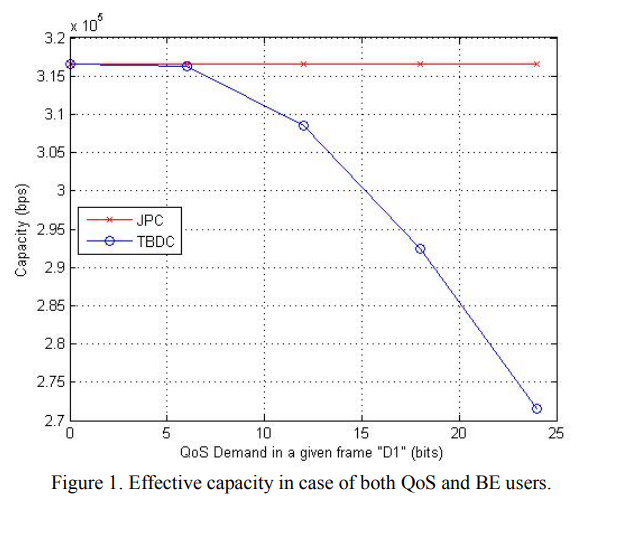
Efficient resource allocation is a critical component in multi-user QoS communications and high speed networks. In this paper, we devise a new mathematical model for the resource allocation problem that takes into account the users' demands in a PHY-MAC cross-layer approach. Incorporating the time axis in our model, the target is to maximize the number of bits transmitted in a given frame rather than maximizing the channel capacity or the average throughput. Our design is governed by constraints on users' demands (expressed in bits), energy expenditure, and frame duration. We model the
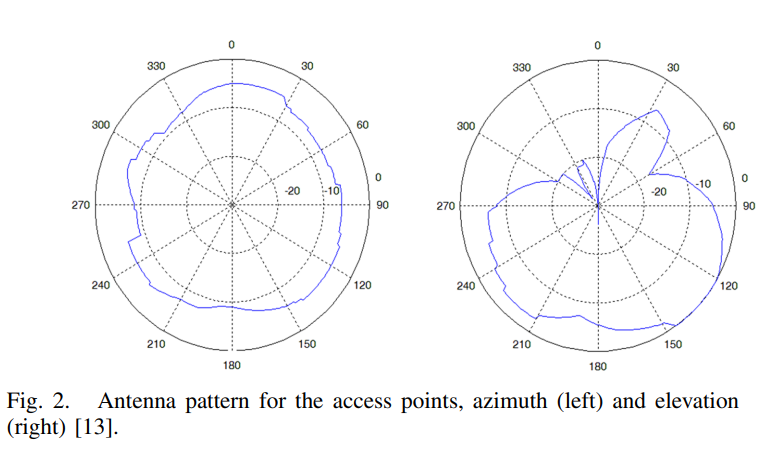
WLAN RSS-based localization has been a hot research topic for the last years. To obtain high accuracy in the noisy wireless channel, WLAN location determination systems usually use a calibration phase, where a radio map, capturing the signal strength signatures at different locations in the area of interest, is built. The radio map construction process takes a lot of time and effort, reducing the value of WLAN localization systems. In this paper, we propose 3D ray tracing as a way for automatically generating a highly accurate radiomap. We compare this method to previously used propagation
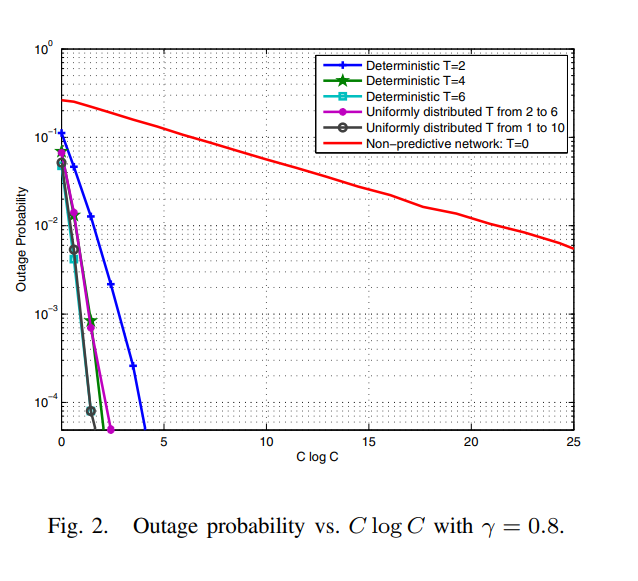
This paper introduces the novel concept of proactive resource allocation in which the predictability of user behavior is exploited to balance the wireless traffic over time, and hence, significantly reduce the bandwidth required to achieve a given blocking/outage probability. We start with a simple model in which the smart wireless devices are assumed to predict the arrival of new requests and submit them to the network T time slots in advance. Using tools from large deviation theory, we quantify the resulting prediction diversity gain to establish that the decay rate of the outage event
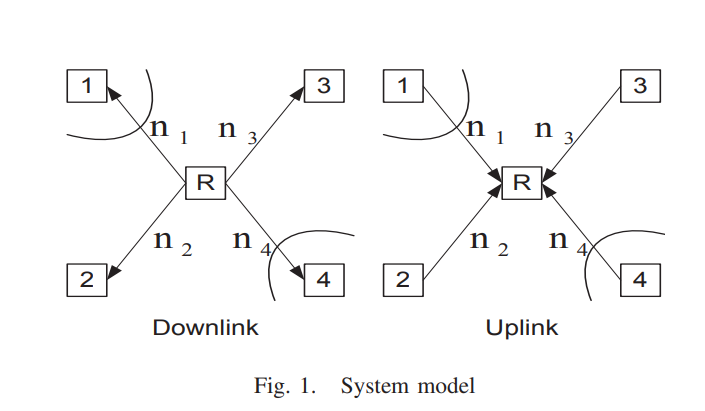
In this paper, we completely characterize the deterministic multicast capacity region of the symmetric two-pair bidirectional half duplex relay network with private messages. Towards this end, we first develop a new upper bound on the deterministic capacity region, based on the notion of a one-sided genie. We then proceed to construct novel detour schemes that achieve the upper bound by routing the bits intended for a certain receiver through the network rather than sending it directly. To the best of the authors' knowledge, this scenario corresponds to one of the rare cases where coding

Successful spectrum sharing in a cognitive radio network depends on the correct and quick detection of primary activity. Cooperative spectrum sensing is therefore suggested to enhance the reliability of such detection. However, it renders another significant problem of increased detection delay and traffic burden. Moreover, efficient schemes for multi-sensor data fusion should be designed. In this paper, we employ sequential detection scheme together with ordered transmissions from cognitive detectors. We derive two sequential schemes, one that is capable of achieving the minimum probability
In this paper, we present a practical and provably secure two-way wireless communication scheme in the presence of a passive eavesdropper. The scheme implements a randomized scheduling and power allocation mechanism, where each legitimate node transmits in random time slots and with random transmit power. Such randomization results in ambiguity at the eavesdropper with regard to the origin of each transmitted frame. The scheme is analyzed in a time-varying binary block erasure channel model and secrecy outage probabilities are derived and empirically evaluated. The scheme is implemented over

Recently we have introduced the notion of proactive resource allocation and predictive wireless networks, where intelligent wireless networks are capable of tracking and exploiting the repetition patterns in human behavior while accessing the network resources. This predictability advantage grants the network more flexibility to schedule users' requests over a longer time horizon, and thereby significantly improves the quality of service (QoS) defined as outage probability. In this paper we extend our analysis to consider a network of two different QoS classes. The first is a primary class
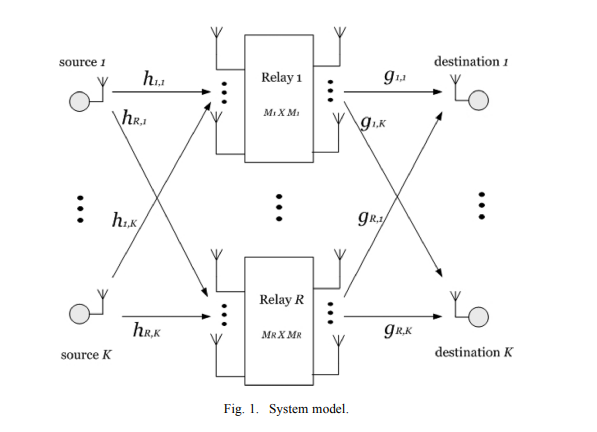
A wireless communication scenario is considered with K single-antenna source-destination pairs communicating through several half-duplex amplify-and-forward MIMO relays where each source is targeting only one destination. The relay beamforming matrices are designed in order to minimize the total power transmitted from the relays subject to quality of service constraints on the received signal to interference-plus-noise ratio at each destination node. Due to the nonconvexity of this problem, several approximations have been used in the literature to find a computationally efficient solution. A
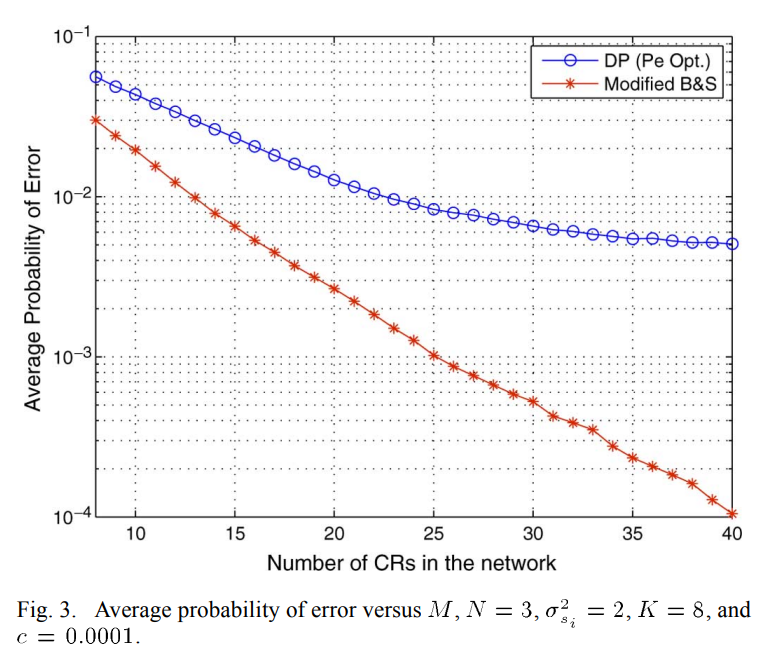
Cooperative spectrum sensing is a robust strategy that enhances the detection probability of primary licensed users. However, a large number of detectors reporting to a fusion center for a final decision causes significant delay and also presumes the availability of unreasonable communication resources at the disposal of a network searching for spectral opportunities. In this paper, we employ the idea of sequential detection to obtain a quick, yet reliable, decision regarding primary activity. Local detectors take measurements, and only a few of them transmit the log likelihood ratios (LLR) to
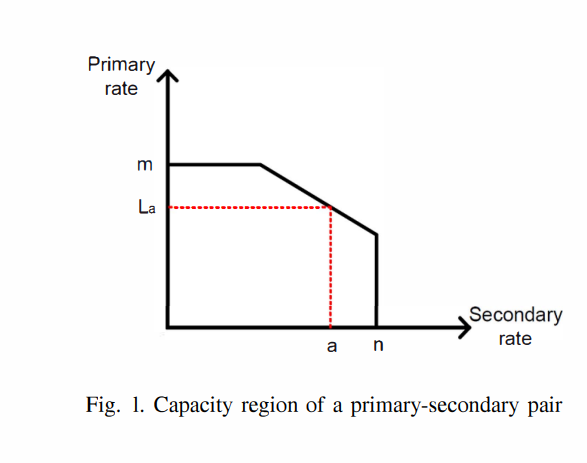
We consider an underlay cognitive radio network with a primary user and a secondary user transmitting to a common receiver. The secondary user senses the primary user's channel to determine whether the primary user is active or idle. The secondary user's transmission policy is determined via a probabilistic cross-layer algorithm in which the secondary user's average packet delay is minimized subject to constraints on its average transmission power and the maximum probability of collision at the primary user. The proposed cross-layer algorithm determines the number of packets the secondary user